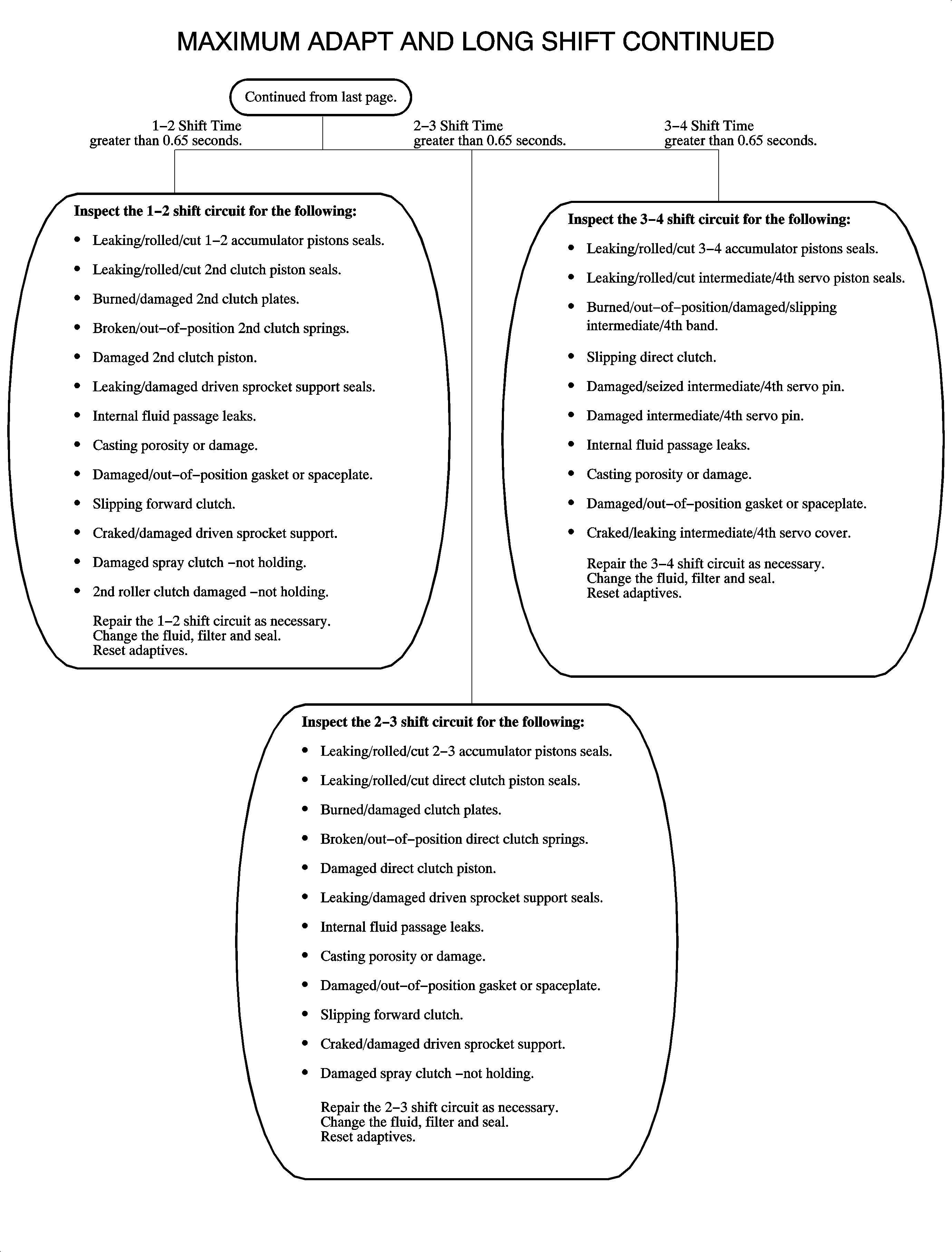
Circuit Description
The powertrain control module (PCM)/transaxle control module (TCM) modifies
the transaxle line pressure through the pressure control solenoid valve, in order
to control shift time and consistency. The PCM/TCM monitors various inputs and modifies
the shift execution and timing by applying a calculated duty cycle to the PC solenoid
valve. The PCM/TCM alters the shifting based on driving habits, transaxle load, and
internal transaxle condition. When the PCM/TCM detects long shifts that cannot be
shortened by shift adapts two times during the same ignition cycle, then DTC P1811
sets.
DTC Parameters
The shift time is greater than 0.65 seconds at maximum adapt
or pressure, for a total of two times during the same ignition cycle.
P1811 is a type C DTC.
Diagnostic Aids
| • | Ask the customer about vehicle overloading, exceeding trailer-towing limit
or towing in Overdrive. |
| • | If after several unsuccessful attempts to gain accurate shift times, and
an adapt can be made, reset adapts and road test the vehicle in order to assure proper
shifting. |
| • | If proper shifting cannot be obtained, refer to the appropriate performance
chart for shift problem. |
| • | If you are servicing a vehicle equipped with an L81 engine, look at the
following parameters on the scan tool: |
Each of these data display parameters correspond to a particular shift and indicates
the amount of pressure change to a particular cell. The range of engine torque is
split into many cells each corresponding to 17 N·m (12.5 lb ft).
Thus, by looking at each cell it can be observed whether pressure was added for a
low engine torque shift (low cell number) or a high engine torque shift. A positive
number in a cell indicator that a long shift time was detected and solenoid pressure
was added to increase shift pressure and decrease the shift time to the nominal time.





